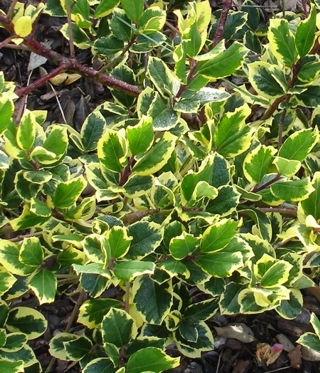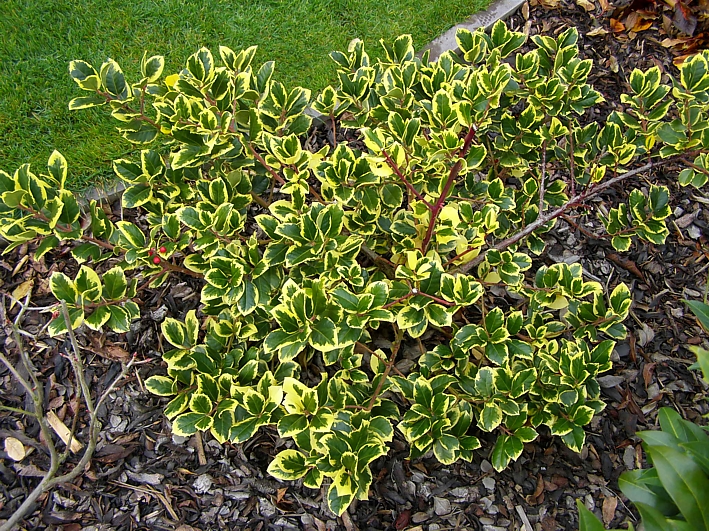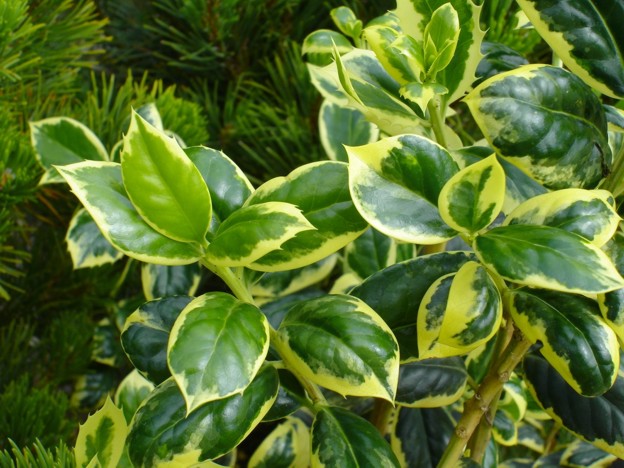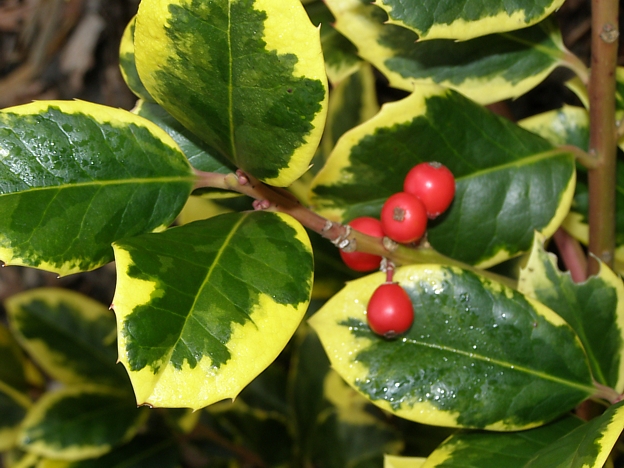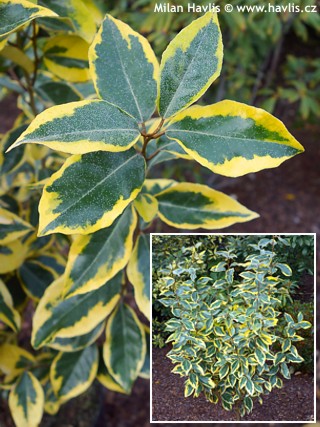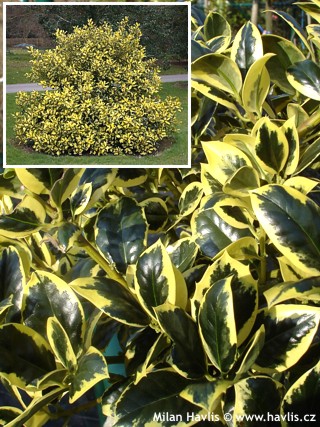Ilex x altaclerensis 'GOLDEN KING' Highclere holly


Ilex
Hollies belong among the most common evergreen and native plants of temperate parts of Europe with high humidity – British Isles, north France, Benelux countries, and milder parts of north Germany. Various species form trees, shrubs, or thickets. They are absent from natural Central European landscape but can be cultivated there without problems. They are renowned for glossy and typically (but not always) prickly leaves. Multiple variegated forms have been selected for garden cultivation.Highclere holly is a hybrid between ilex aquifolium and ilex perado, most probably from England but without any evidence. All varieties of this hybrid are quite unique and have almost spineless, large leaves, and often exhibit vigorous growth. Its hybrid name altaclerensis is sometimes contested in favour of altaclarensis, given the explanation that Highclere (as in Highclere Castle) cannot be linked to it. In fact, many believe that the hybrid name was chosen in honour of the castle parkland which is a home of a renowned collection of many valuable plants. It is listed Grade I on the Register of Historic Parks and Gardens, and as a Site of Special Scientific Interest.
As every female holly, it needs a male pollination partner to produce berries. In this case any large-leaved male holly species will do the job (i. aquifolium, i. x altaclerensis, i. x koehneana, etc.). Small-leaved species such as i. crenata are unsuitable. Pollination is done by winged insects, especially bees that can carry pollen from the distance of almost 2 km so in theory, you needn’t own a male holly yourself if you want berries and know that there is more than one male holly in your neighbourhood. The berries are not edible nor poisonous but contain saponins which cause severe discomfort if eaten.
Golden King is a slow grower in C.E. climate. Its natural shape is rather spreading and shrubby without a strong terminal leader. In countries with ideal climate and growing conditions for hollies (England, north Germany, the Netherlands and similar) it can grow to 4-5 meters, however, in Central Europe we can expect 2-3 meters if we are lucky. It grows slowly and can be pruned and shaped to maintain smaller size or a better shape. Do not cut into old wood. It takes a considerable amount of time to repair its shape. Pruning in April will encourage new growths, trimming by end July is ideal for shaping.
Grow hollies in moist but well-drained, fertile soil. They can take periods of drought once established but dislike compacted, heavy-clay-based soils that turn very dry in summer and often too wet in winter. If your soil is such, dig the planting hole only half the depth of the root ball, refine what you dig out and mix it well with quality substrate of highly acidic level (low pH value). Make a gradual slope with this mixture from the plant’s stem to the original ground level and tamp it down as much as you can. Your root ball should not look like a molehill but more like a wide and flat mound. Mulch it well and water it more often as it will be more prone to drying out as opposed to most common flat-in-the-ground transplanting. If you live in a region with cold winters and long-lasting frost, we recommend growing it in a position sheltered from drying winds, and preferably shaded from winter sun. Hardy to about -25 °C (USDA zone 6). Not suitable for outdoor planters.
Last update 16-01-2009; 15-10-2024
Goods are shipped all over Europe. For Russia and U.K. and for further details please read about SHIPPING OPTIONS HERE.
Are you interested in a serious discount for orders NOV-FEB? Check your options here.
THE PRICES INCLUDE VAT of 15%. For quick conversion you can use 1 CZK = approx. 0.04 EUR
- STANDARD QUALITY - Plants of this group are 1st class quality with number of branches and overall density adequate to their size and age, considering they were container grown.
- DE LUXE QUALITY - This label guarantees a luxurious quality of manually selected plants that, compared to their height and age, are exceptionally dense and beautiful.
- EXTRA - These plants are usually mature and bigger specimens with exceptional overall appearance.
- STANDARD (as described in the plant form) means a tree with a trunk of 190-210 cm and a crown at the top, unless specified differently. The commercial size for trees is their girth measured in the height of 1m from ground.
- HOBBY - These plants are of the same quality as our standard-quality plants but younger and therefore cheaper.
- SHRUB - a woody plant with branches growing bushy from the ground level.
- HALF-STANDARD or MINI-STANDARD - a small tree with shorter trunk, its size is usually specified.
- FEATHERED - These are trees with branches growing already from the base of the trunk and up along the stem.
- GRASSES and PERENNIALS - Sizes given usually read the diameter of the pot or the clump, as specified.












